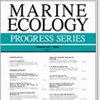Exploring high intertidal refugia as an approach for the restoration of an intertidal oyster
IF 2.1
3区 环境科学与生态学
Q2 ECOLOGY
引用次数: 0
Abstract
ABSTRACT: Marine organisms frequently inhabit intertidal zones that serve as refuges from predation and competition but are not optimal physiologically. Restoration practitioners working with intertidal species may similarly have to consider whether restoration success will be greater where conditions are more benign (usually lower in the intertidal) or where negative biotic interactions are reduced (usually higher in the intertidal). In cases where a target species has greater desiccation tolerance than its enemies, restoration may be more successful higher in the intertidal zone, despite potential performance trade-offs. In many US West Coast estuaries, non-native drill species can decimate native oyster populations, posing a challenge to restoration. Given that native Olympia oysters Ostrea lurida should be better able to withstand tidal emersion than the non-native Atlantic oyster drill Urosalpinx cinerea, we explored using the high intertidal as a refuge from predation as a potential restoration technique. Using surveys and a field experiment, we investigated the recruitment, growth, and survival of oysters as well as drill abundance and predation over 3 tidal elevations. Oysters recruited and survived equally well at +0.1, +0.5, and +0.8 m mean lower low water, but juvenile oyster growth decreased with increasing elevation. In our experiment, predation on oysters was lower at the highest elevation than at low and mid elevations, but in natural populations there was a near complete absence of O. lurida at any elevation where U. cinerea was present. This suggests that a higher tidal elevation refuge is not a viable approach for oyster restoration in our study area.探索潮间带高地庇护所作为恢复潮间带牡蛎的一种方法
摘要:海洋生物经常栖息在潮间带,潮间带是躲避捕食和竞争的庇护所,但在生理上却并非最佳状态。与潮间带物种打交道的恢复工作者可能同样需要考虑,是在条件更有利(通常在潮间带较低)的地方,还是在负面生物相互作用减少(通常在潮间带较高)的地方,恢复的成功率会更高。如果目标物种比其天敌更耐干燥,那么尽管可能会出现性能权衡,但在潮间带较高的地方恢复可能会更成功。在美国西海岸的许多河口,非本地钻孔物种会消灭本地牡蛎种群,给恢复工作带来挑战。鉴于本地奥林匹亚牡蛎(Ostrea lurida)应该比非本地大西洋牡蛎钻头(Urosalpinx cinerea)更能经受潮汐浸泡,我们探索了利用潮间带高地作为躲避捕食的避难所这一潜在的恢复技术。通过调查和现场实验,我们研究了牡蛎的繁殖、生长和存活情况,以及钻头在 3 个潮位的丰度和捕食情况。在+0.1、+0.5和+0.8米平均低水位时,牡蛎的繁殖和存活率相同,但幼蛎的生长随着海拔的升高而下降。在我们的实验中,最高海拔处牡蛎的捕食量低于低海拔和中海拔处,但在自然种群中,任何海拔高度处都几乎完全没有 O. lurida,而 U. cinerea 存在。这表明,在我们的研究区域,潮汐海拔较高的避难所并不是恢复牡蛎的可行方法。
本文章由计算机程序翻译,如有差异,请以英文原文为准。
求助全文
约1分钟内获得全文
求助全文
来源期刊

Marine Ecology Progress Series
环境科学-海洋学
CiteScore
5.30
自引率
8.00%
发文量
238
审稿时长
3 months
期刊介绍:
The leading journal in its field, MEPS covers all aspects of marine ecology, fundamental and applied. Topics covered include microbiology, botany, zoology, ecosystem research, biological oceanography, ecological aspects of fisheries and aquaculture, pollution, environmental protection, conservation, and resource management.
 求助内容:
求助内容: 应助结果提醒方式:
应助结果提醒方式:


